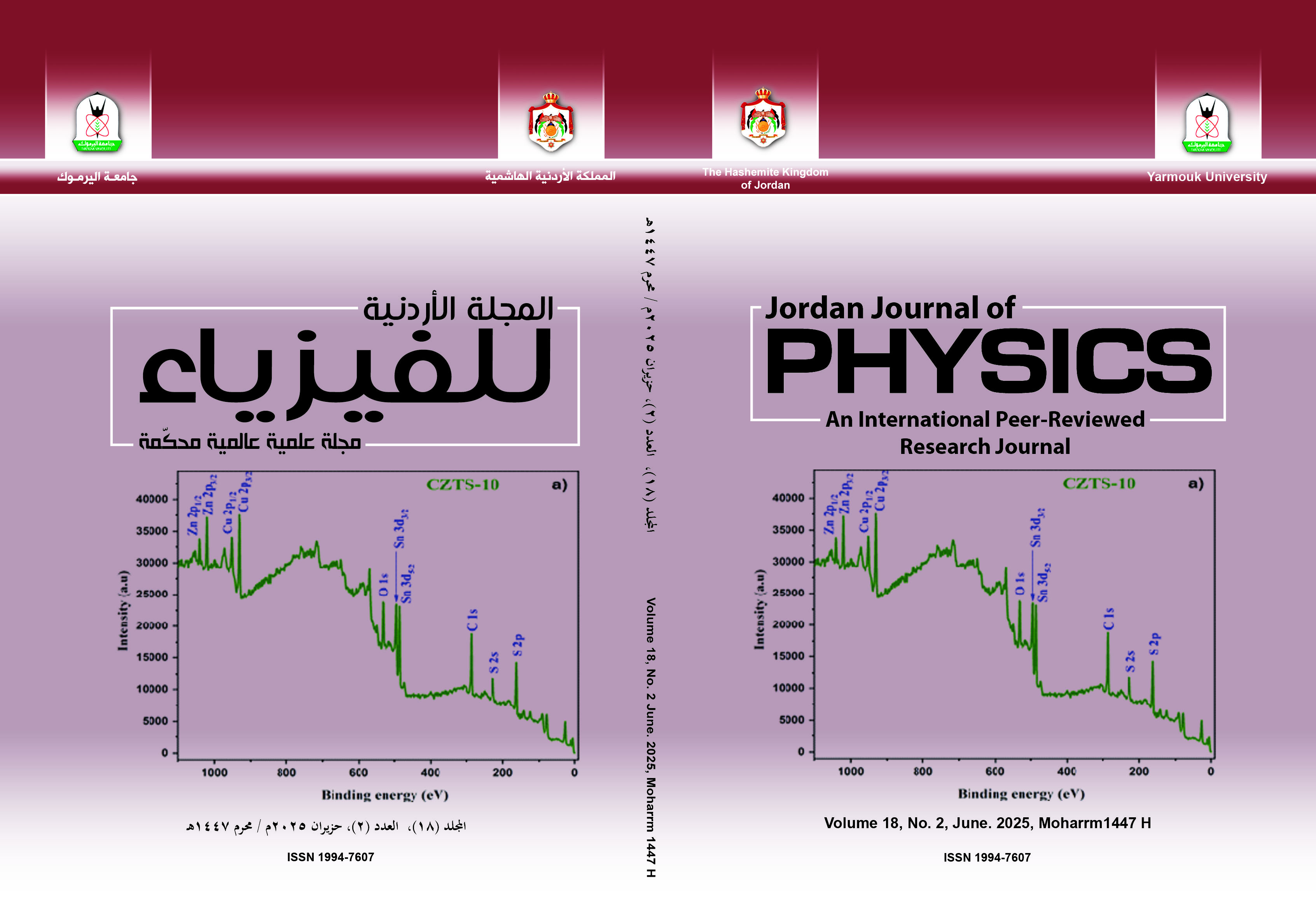Electronic and Optical Properties of Zr-, Zr-N-doped 2D MoS2 Using First-Principle Study
Keywords:
MoS2 monolayer, Zr doped, Zr-N co-doped, DFT study, Electronic propertiesAbstract
Abstract: A MoS2 monolayer is an emerging two-dimensional (2D) semiconductor for next-generation flexible and miniaturized electronics. Its doping is of great importance in order not only to adapt its properties, but also to facilitate many potential large-scale applications. In this work, density functional theory (DFT) calculations, including spin-orbit coupling (SOC), were performed to investigate the effects of p-type transition metal Zr doping and Zr–N co-doping on the structural and optoelectronic properties of pristine MoS2. Results obtained using both the PBE and TB-mBJ approximations show that while pristine and Zr-doped MoS2 monolayers exhibit semiconductor behavior with direct and indirect band gaps, respectively, Zr-N co-doping leads to a transition to metallic behavior. The Zr and N atoms significantly affect the partial and total density of state profiles, with a main contribution of Zr − d, N − p, and S − p orbitals. The dielectric function and optical refractive index are also determined. The findings show anisotropy in optical characteristics, which is promising for optical applications. The Zr-doping and Zr-N co-doping employed in this study provide an effective tool for changing the electrical and optical properties of MoS2 monolayers to fulfill the needs of a variety of technological applications while producing an optoelectronic device based on a MoS2 monolayer.


